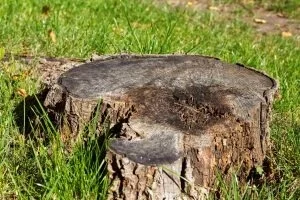In a world where cities are hotter, storms are stronger, and soil quality is declining, managing urban trees is no longer a seasonal maintenance job—it’s a data-driven science. The latest trend reshaping arboriculture is climate-adaptive management, where every decision—whether tree pruning, tree removal, or stump removal—is guided by sensor data, sustainability metrics, and long-term resilience forecasting.
From Random Cutting to Predictive Management
Traditional tree work often relies on visible symptoms—dead limbs, leaning trunks, or decaying stumps. But new research shows that early structural stress, disease, or root decay can be detected months before visual symptoms appear.
Smart sensors now measure trunk moisture, canopy density, and soil compaction in real time. AI platforms combine this data with weather patterns to suggest whether a tree needs targeted tree pruning to relieve wind pressure or complete tree removal to prevent structural failure.
This predictive approach reduces accidents, minimizes unnecessary removals, and keeps mature trees thriving longer—improving both safety and urban canopy coverage.
Precision Tree Pruning for Climate Resilience
The biggest shift in the field is understanding that tree pruning is not cosmetic—it’s preventative therapy. Adaptive pruning methods are now tuned to each species’ stress response to heat, drought, and storms.
For example:
-
In hot climates, selective canopy thinning improves airflow and reduces leaf burn.
-
In high-wind areas, structural pruning focuses on reducing sail effect and balancing crown weight.
-
In pollution-heavy zones, arborists are prioritizing retention pruning, which preserves leaf density for better air filtration.
Modern tree pruning uses drones and digital tomography to locate internal decay and optimize pruning angles. This minimizes unnecessary cuts, helping trees recover faster and stay more resistant to pests and diseases.
Eco-Centered Tree Removal: Beyond Just Cutting
When tree removal is unavoidable—due to disease, safety hazards, or development—today’s best practices go far beyond cutting and hauling.
Urban forestry experts now evaluate each removal for its potential to support carbon recapture and habitat creation. Logs and branches from removals are being repurposed into:
-
Biochar to improve soil health.
-
Habitat piles to support insects and small wildlife.
-
Recycled timber for community benches and landscaping elements.
Some municipalities have even begun mapping tree removal data to track carbon loss and replanting progress. This helps cities measure whether every tree removed is being offset by new plantings with equivalent or greater environmental value.
Smarter, Greener Stump Removal Techniques
The hidden part of urban forestry is what happens below the surface—stump removal. Traditional methods rely heavily on grinding or chemical rot accelerants that can damage soil microorganisms. The emerging trend is biological stump remediation.
Biodegradable enzyme solutions and fungal inoculants are now used to naturally decompose stumps over 6–12 months. This maintains soil structure, avoids chemical leaching, and prepares the ground for replanting.
In areas where new infrastructure is planned, robotic stump grinders and vacuum excavation systems remove root systems with minimal soil disruption—saving both time and the surrounding vegetation.
The result: cleaner removals, faster site recovery, and better biodiversity underfoot.
Linking the Three: A Circular Ecosystem
The most forward-thinking arborists and urban planners now treat tree pruning, tree removal, and stump removal as parts of a circular ecosystem rather than isolated services.
Each action feeds the next:
-
Smart pruning reduces the need for removals.
-
Responsible removal supplies resources for soil regeneration.
-
Sustainable stump management ensures the next planting thrives.
This circular model has proven cost-effective and environmentally beneficial. In some pilot cities, adaptive pruning reduced removal frequency by 28%, while biological stump removal improved soil fertility by up to 40%.
Homeowner and Business Takeaways
For property owners and landscape managers, understanding this new wave of arboriculture means smarter decisions and longer-lasting greenery.
-
Monitor Before You Cut: Always get a digital health scan or arborist report before tree removal.
-
Prioritize Structural Pruning: Ask for climate-adaptive tree pruning that strengthens the tree’s form, not just trims the top.
-
Choose Eco-Friendly Stump Options: Opt for biological or robotic stump removal methods to preserve soil health.
-
Plan Replanting Immediately: Treat each removal site as a replanting opportunity, not an empty space.
Why This Approach Is Trending on SERP
Search patterns show a shift toward “eco-friendly tree removal,” “AI-based pruning,” and “organic stump removal.” These queries are driven by homeowners and cities seeking sustainable, technology-driven solutions. Yet, only a small number of companies are producing expert content on these topics—making it a rare but high-SEO-potential area to rank for in 2025.
Final Thought
Smart arboriculture is not about doing less—it’s about doing right. When tree pruning, tree removal, and stump removal decisions are guided by data, biology, and sustainability rather than routine maintenance, every cut becomes a contribution to a healthier, more climate-adaptive urban forest.






